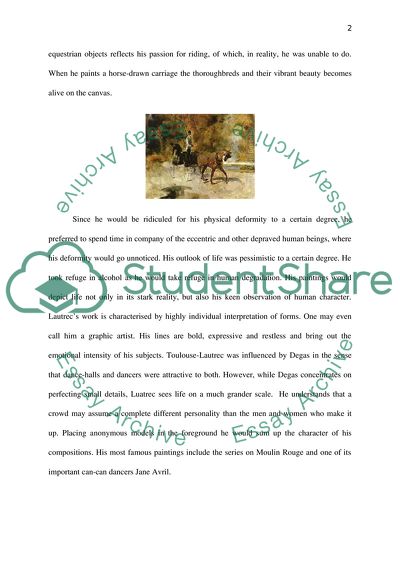Cite this document
(Contrast between Henri de Toulouse-Lautrec and Paul Gauguin Essay Example | Topics and Well Written Essays - 1250 words - 4, n.d.)
Contrast between Henri de Toulouse-Lautrec and Paul Gauguin Essay Example | Topics and Well Written Essays - 1250 words - 4. https://studentshare.org/visual-arts-film-studies/1751611-art-history
Contrast between Henri de Toulouse-Lautrec and Paul Gauguin Essay Example | Topics and Well Written Essays - 1250 words - 4. https://studentshare.org/visual-arts-film-studies/1751611-art-history
(Contrast Between Henri De Toulouse-Lautrec and Paul Gauguin Essay Example | Topics and Well Written Essays - 1250 Words - 4)
Contrast Between Henri De Toulouse-Lautrec and Paul Gauguin Essay Example | Topics and Well Written Essays - 1250 Words - 4. https://studentshare.org/visual-arts-film-studies/1751611-art-history.
Contrast Between Henri De Toulouse-Lautrec and Paul Gauguin Essay Example | Topics and Well Written Essays - 1250 Words - 4. https://studentshare.org/visual-arts-film-studies/1751611-art-history.
“Contrast Between Henri De Toulouse-Lautrec and Paul Gauguin Essay Example | Topics and Well Written Essays - 1250 Words - 4”. https://studentshare.org/visual-arts-film-studies/1751611-art-history.


